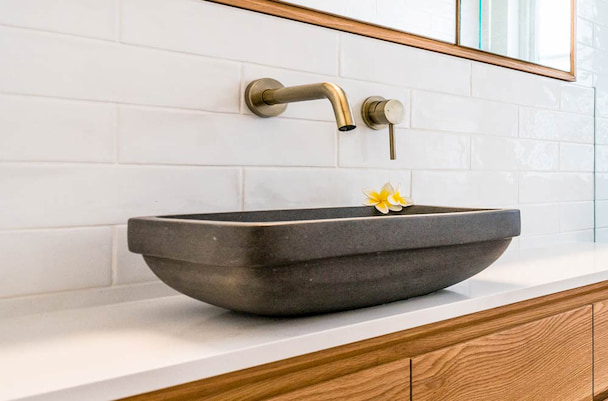Discover What Sets Stainless Steel and Brass Kitchen Taps Apart
When it comes to renovating a kitchen, besides choosing small appliances wisely, paying close attention to the kitchen tapware is also important. And while its aesthetics should match your kitchen’s style, it’s the material you should really focus on. Out of all kitchen tap materials, stainless steel and brass are the most sought-after ones. Both of them are appealing and stylish, but understanding their features better can help you make the right choice.
Stainless Steel vs. Brass Tapware
Generally speaking, stainless steel tap kitchen models are made of iron that is usually mixed with nickel and chromium. However, some of them can also contain a little bit of silicon, manganese, and carbon. Out of all, chromium is of vital importance in stainless steel kitchen tap composition as it makes it corrosion-resistant. Nickel, on the other hand, is used for making it more resistant to temperature fluctuations and gives its hardness, while manganese makes stainless steel stronger and easier to work with. All of these things make stainless steel kitchen tapware quality and durable.

source: justinplace.com.au
Although quite similar on the outside, brass usually comes as the second choice in taps for the kitchen. When it comes to designing brass kitchen taps Australia and New Zealand safety standards require them to be made not just of brass. Instead, dezincification resistant brass (DR) brass is the only type proven as safe to use in kitchen taps. The reason why they are usually made with copper alloy with a zinc content of more than 37% is to help against severe corrosion that can happen from highly chlorinated water. However, corrosion in brass taps can also happen when the water is high in oxygen and carbon dioxide. So, the use of the aforementioned metals is essential in brass taps.
Durability
Stainless steel is one of the most commonly used materials in tapware because of its durability. It is one of the strongest materials for the purpose, especially when it’s 304-grade stainless steel. When it comes to brass taps, although the dezincification resistant brass can last longer than regular brass taps, it can erode after time when exposed to humidity.
Which Material Is Safer to Use?
Besides being prone to corrosion, brass contains arsenic and lead, which can mix with water after some time. Even small amounts of them can lead to metal poisoning in people. What’s more, the interior surface of brass taps can be the perfect home for debris which can accumulate over time and turn into dirty black grime that can affect the water’s taste and quality.

source: pinterest.co
Unlike brass, stainless steel taps have a smoother surface on the inside, without any crevices or pores where bacteria could harbour. In other words, stainless steel is considered more hygienic and safer than brass, and any other metal used for kitchen taps as a matter of fact. So, it’s no wonder that stainless steel taps can be found even in hospitals, schools, hotels, and restaurants.
Which Option Looks Better?
Without a doubt, brass taps can be extremely appealing. With finishes like gold, copper, matte black, and coloured paint, these taps can certainly draw anyone’s attention. Unfortunately, these coatings are easy to scratch and over time they may start to peel. Stainless steel taps, on the other hand, have no coating, and even without it, they still look attractive. In case you want a different finish, you can choose from brushed or polished stainless steel tap models.
Which Is Easier to Clean?
Even in this aspect, stainless steel taps win the battle. They only need to be wiped with a soft cloth from time to time and that’s it. Brass taps, on the other hand, can be harder to clean because of their tarnish coat.
Look for WaterMark

source: unsplash.com
Both kitchen and bathroom tapware in Australia and New Zealand need to be certified under the WaterMark Standard for Australia and New Zealand. The WaterMArk signals that these products comply with the plumbing code of Australia and New Zealand and some other relevant standards.
How to Replace a Kitchen Tap?
Depending on the model, some taps are quite easy to replace. All you need to do is know the type of tap you have and get some essential tools like adjustable pliers, screwdriver, basin wrench, pipe cutter, etc. However, if you haven’t done anything like this before, it’s always better to seek professional help to make sure everything is done properly.
How to Fix a Leaking Kitchen Tap?

source: marcoplumbing.ca
Water dripping can be resolved by simply cleaning the internal cartridge or replacing it with a new one if necessary. In order to inspect it, you will need to remove the lever handle, twist off the metal collar which is located beneath the lever handle, remove the cartridge and inspect it for blockages or splits. If needed, get a new one, fit it back in and that’s it. Just make sure you follow all the steps to ensure everything is done right.